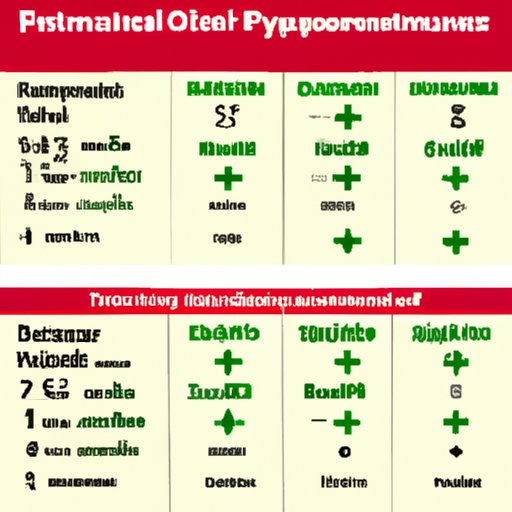
Introduction
Exponents can sometimes be intimidating for students, especially when it comes to division. But with the right knowledge and guidance, solving exponents can be made simple and easy.
In this article, we’ll explore how to divide exponents step-by-step, common mistakes to avoid, and real-world applications where exponent division is used. Understanding exponent division is crucial for success in algebra and other advanced math courses.
The Beginner’s Guide to Dividing Exponents
Before we delve into dividing exponents, let’s first understand what exponents are and how to recognize them. An exponent represents the number of times a base is multiplied by itself. For example, in the expression ‘23‘, 2 is the base and 3 is the exponent. So, 23 means 2 multiplied by itself 3 times, which equals 8.
Now, let’s move on to dividing exponents. The rule of thumb when dividing exponents is to subtract the exponent of the divisor from the exponent of the dividend. In other words, when dividing ‘am‘ by ‘an‘, the answer would be ‘am-n‘.
Let’s take a closer look at this rule with an example. Suppose we want to divide ’104‘ by ’102‘. Using the formula above, we subtract 2 from 4, which equals 2. So, the answer is ’102‘, which is 100.
Math Made Easy: Dividing Exponents
There are several methods for dividing exponents, but we’ll focus on the most effective ones.
Breaking Down the Problem
When dividing exponents, it’s essential to break down the problem into smaller steps. First, we need to recognize the base of the exponents. Then, we apply the rule of thumb mentioned above. Finally, simplify the answer by solving any remaining arithmetic.
Here’s an example to illustrate this method. Let’s divide ’276‘ by ’274‘. First, recognize that both exponents have the same base, which is 27. Applying the rule of thumb, we subtract 4 from 6, which equals 2. Therefore, the answer is ’272‘. Finally, simplify 272, which equals 729.
Quotient Rule of Exponents
Another effective method for dividing exponents is the quotient rule. The rule is as follows: ‘am / an = am-n‘.
Let’s see an example to illustrate this method. Suppose we want to divide ‘85‘ by ‘83‘. Using the quotient rule, we subtract 3 from 5, which equals 2. So, the answer is ‘82‘, which equals 64.
Other Helpful Tips
Here are some additional tips to keep in mind when dividing exponents:
- Always simplify the bases first before dividing the exponents
- If there’s more than one term in the divisor, divide each term by the dividend individually
- When dividing variables, ensure that they have the same base
Why Understanding Exponent Division is Crucial for Algebra Success
Exponent division plays a fundamental role in algebra. Without a solid grasp of this concept, students can struggle to master more complex algebraic expressions and functions. Exponent division is used to simplify complex mathematical expressions and equations, making it easier to solve them.
Furthermore, understanding exponent division sets a strong foundation for more advanced math learning, such as calculus and differential equations, which heavily rely on knowledge of exponents and their properties.
Common Exponent Division Mistakes (and How to Avoid Them)
Mistakes are an inevitable part of learning, but here are some common exponent division mistakes to avoid:
- Forgetting to subtract the exponents when dividing
- Incorrectly applying the rules of exponents
- Mixing up the bases of the exponents
- Dividing the exponents instead of subtracting them
To avoid these mistakes, it’s essential to practice exponent division regularly and seek help from a teacher or tutor if needed.
Exponent Division: A Real-World Application
Exponent division has real-world applications, one of which is calculating the returns on investment with compounding interest. Compounding interest is when interest is calculated on the initial investment, as well as on the accrued interest. Here’s how to calculate compounding interest:
- Calculate the interest on the initial investment and add it to the initial investment
- Calculate the interest on the new total amount (initial investment + interest) and add it to the new total amount
- Repeat this process for every time period (month, year, etc.) to get the final amount
This process can be easily calculated using exponent division. The exponent in this case represents the number of times interest is compounded.
Conclusion
Dividing exponents may seem daunting at first, but with practice and the right guidance, it can become second nature. Understanding exponent division is crucial for success in algebra and other advanced math courses. By mastering exponent division, students can set a strong foundation for more advanced math learning and tackle real-world calculations with ease.
Don’t be afraid to seek help if needed, and always remember to practice regularly. Keep these tips and methods in mind, and exponent division will soon become a breeze.




